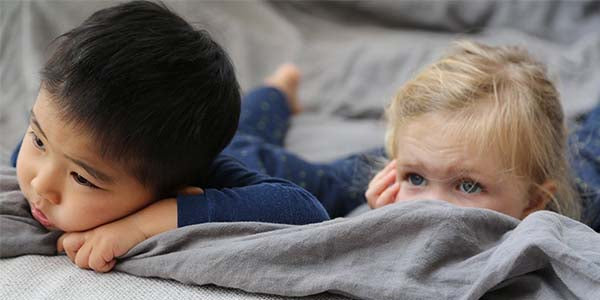
5 ways to improve your child’s sleep environment, helping them sleep better for longer.
As parents we all experience some level of concern for our children’s sleep habits
We know that fostering healthy sleep habits when children are young can lead to better outcomes for their health, learning and wellbeing. There is countless written advice available to parents concerning baby and child sleep habits, and offering solutions to sleep problems. Much of this advice is focused on the importance of routines and settling methods. However, it is also good to remember to start with the basics: the bedroom environment and the comfort of the child.
Is your child’s bedroom a conducive environment for sleep?
First and foremost, creating a safe and comfortable environment will be key in helping your child to sleep better. Here are 5 simple things that you can easily change to ensure that your child’s room is one that is conducive to sleep:
1) Remove all distractions
Keep your child’s room free of anything that may over stimulate their senses. This may include toys or musical novelties on their bed, mobiles, bright-coloured décor and prints. Removing these distractions will help your child stay calm and keep the focus on sleep.
2) Darken the room
In a darkened room your child’s body releases melatonin, a calming hormone. This hormone helps to prepare their body for sleep and, once asleep, helps them to stay asleep for longer. This is a naturally occurring hormone that is only triggered in a darkened space.
By drawing in the curtains and turning off the lights, you will be helping reduce the amount of stimulation for your child which will, in turn, help them to settle better.
3) Keep a consistent noise level
Your child doesn’t need an absolutely silent room in order to sleep. Many children find comfort in the soothing humming of background noise. What is important is keeping the noise level consistent.
Creating a constant background noise using a radio or white noise recording can not only help with this, but also assist in blocking out sudden noises from outside.
4) Dress your child in comfortable, natural fibre clothing
Your child’s clothing is paramount to their comfort. Choose fabrics that are lightweight and feel soft against the skin. For greatest comfort, choose clothing that is loose and has some level of stretch for movement.
Consider your child’s clothing to be the casing around their skin. Avoid synthetic fibres such as polyester and acrylic. These are not breathable materials and behave like plastic against the skin, trapping in heat and moisture, and making your child prone to overheating. Choosing natural fibre clothing for your child will allow their skin to breathe naturally and avoid the discomfort of feeling sweaty and clammy.
5) Keep a cool room temperature
Most experts agree that it is better to sleep when the air temperature is on the cooler side, between 18-20 degrees Celsius. When your child falls asleep, their bodies will naturally cool down. A cooler room will help them reach that lower temperature faster and encourage a deeper sleep.
Start with small changes to affect your child’s sleep environment
Regardless of your bedtime routine and your settling methods, you will find that creating a good sleep environment can have a significant and positive impact on your child’s sleep pattern and quality of sleep. Paying attention to your child’s room environment and clothing choices can help to produce a more calming and comfortable setting. This means healthier and better sleep for your child…and, hopefully for you.
